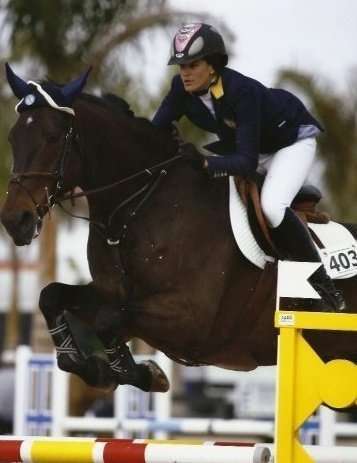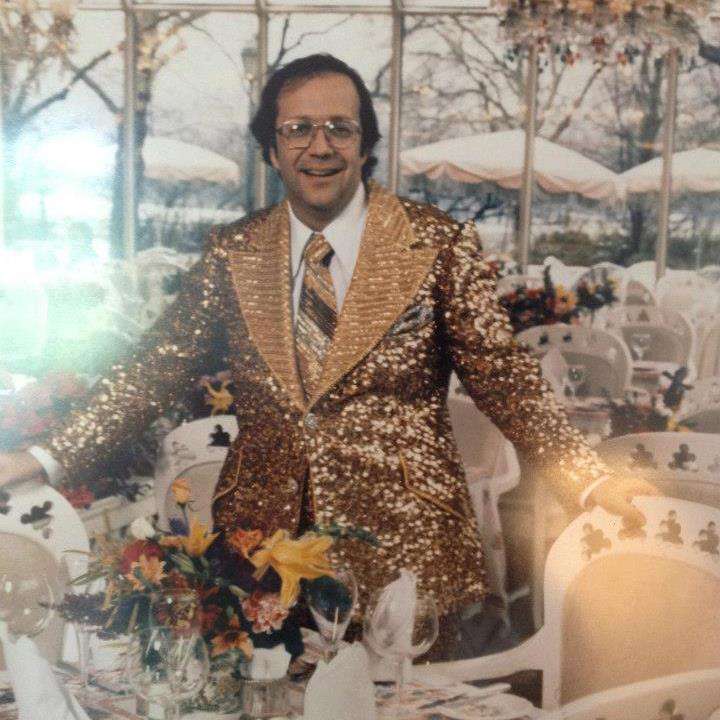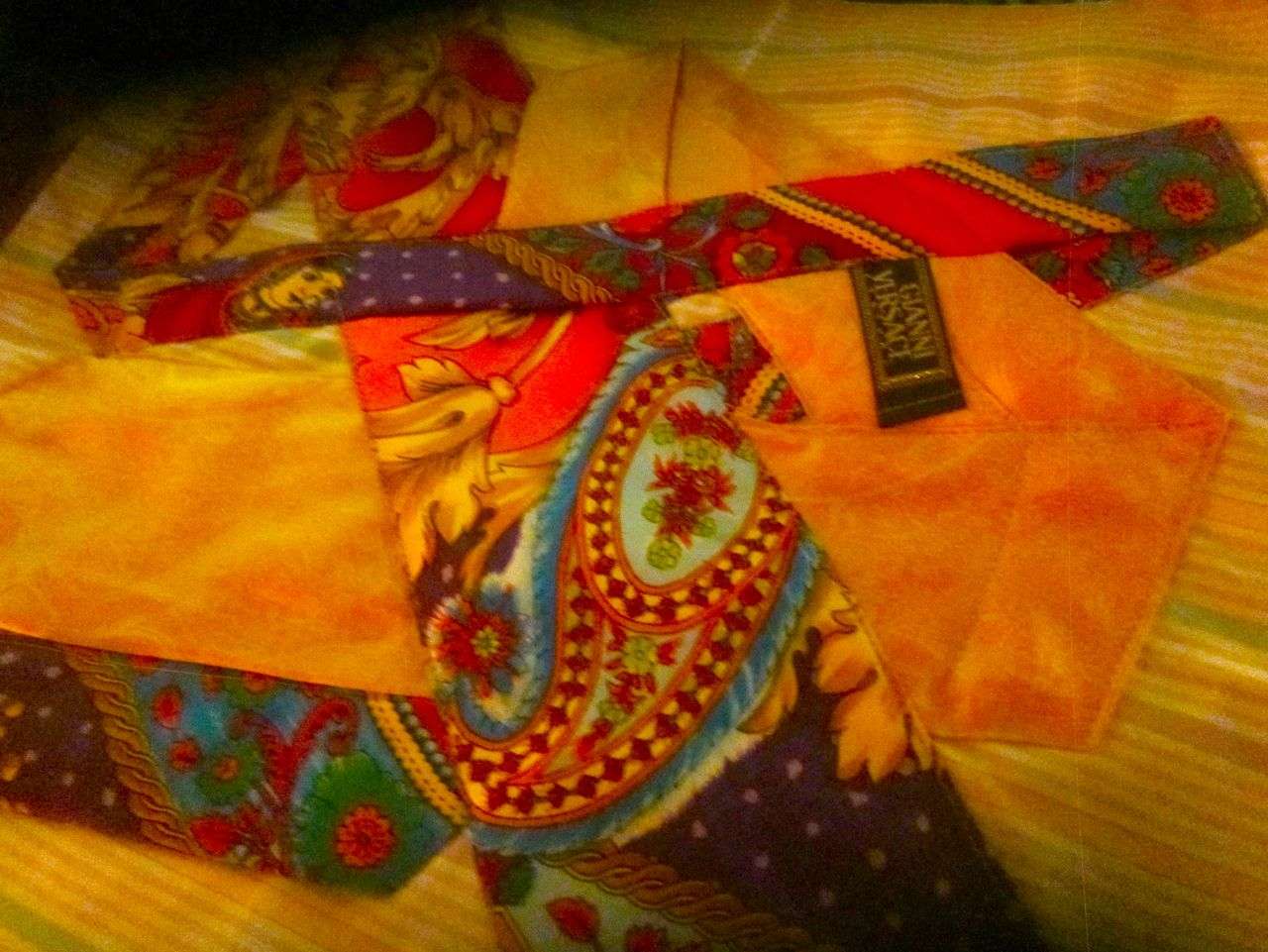September 9, 2013 |
Short Order
Jennifer LeRoy plans Meat Market Maxwell’s Plum as homage to Warner and his neckties

Photo by Steven Michael King
Jennifer Oz LeRoy dreams in Technicolor and widescreen just like her father Warner LeRoy. LeRoy’s youngest child and designated successor to the flamboyant restaurateur in 2001 at just 22 may have lost his empire to fierce debt and then, miscalculation, but she is still skipping down the yellow brick road in Warner’s name. The court took away her claim to the name, Tavern on the Green. So, her homage to daddy will be Maxwell’s Plum in a 21,000 sq.ft Meat Market building.
Since bowing to a crushing $30 million dollar debt and closing the Russian Tea Room in 2002, and filing for bankruptcy at Tavern on the Green in September, 2009 after the city rejected her plan to save it, she has been talking about a comeback and scouting locations. There were other emotional blows, the death of her brother Max in a motorcycle accident in 2005. She retreated to upstate Saugerties, to her 80 acre horse farm, and horse spa, where she rides and cares for her neighbors horses, too.

But now she is close. She expects to sign a contract at any moment in the Meat Market to revive Maxwell’s Plum, the impresario’s accidental feeding triumph on the corner of First Avenue and 64th Street. (He was a modest off-Broadway theater producer and director in l966, when he decided to open a cafe in the small corner luncheonette.)
No, Jennifer won’t tell me the exact location of Maxwell’s rebirth. There is competition and still ahead, negotiations. But Thor Equities – “They called me” – will be her landlord and partner. “And they own almost everything down there, so if it isn’t this spot, it will be another,” she insists. And yes, her middle name is Oz. Her grandfather, Mervyn LeRoy, producer of “The Wizard of Oz,” insisted. She has a photograph of herself and her siblings posing with the Munchkins.
As Jennifer, now 34, describes it, long dark hair pulled back, fairly vibrating with positive energy, the West 14th Street corridor of impulse is perfect for her vision. “Everyone goes there. Now with the High Line and the Whitney, it just needs some lower price retail. A Gap would be good.” As for the coveted building she has in mind: there’s 18,000 sq.ft for banquets and 350 seats for a la carte. (Like Tavern’s Crystal Room.) Three floors and 3500 sq.ft outdoors. Covered. “That will be my garden. And my mom has all the recipes. My father made her test all the dishes.”

Jennifer and her mother, Warner’s second wife Kay – she was a stewardess when she met LeRoy in the midst of the riotous mating scene at early Maxwell’s -- have been going through Warner’s vast collections. “It’s like a treasure hunt,” Jennifer says. “It’s all there, the animals, the fixtures, the brass walls, the mural of Central Park.” Alas, the sprawling warehouse is gone and many Tavern treasures (auctioned in the bankruptcy). And the handsome square mating bar was bought by Drew Nieporent, a Maxwell’s veteran, as a centerpiece for his Tribeca Grill. But no problem. There’s another bar in storage. Warner had it made for some grand project and never used it.
And the astonishing Tiffany glass ceiling in the back room illuminated from behind by 1,252 60-watt bulbs went into the ill-fated Russian Tea Room grandiloquence. In1970 Kay went to the public library and made a list of glass dealers from the Yellow Pages. Then she scoured the country, coming back with 10,000 sheets of Tiffany glass for Warner and his craftsman to piece into that ceiling for a Maxwell’s expansion. “It’s not a problem,” says Jennifer. “We’ll recreate the ceiling but it will be something better. Different. I like something new and exciting."

Warner in a characteristic pose at Tavern.
Then there is Warner’s vast wardrobe. All stored. How to work his splashy suits and thousands of ties and unworn pocket hankies into the décor. The Moroccan djellaba with copper water cups, the Western gear with sequined lion’s heads on the back, the black dinner jacket painted with giant incandescent flowers in pink and orchid and coral.
Jennifer reaches into her tote and unfolds two cotton squares with patterns created by slicing up his neckwear. We’re at dinner in a new Greek place across from Bloomingdale’s. Her press agent, Shelly Clark, and I agree the squares are marvelous. “You could wallpaper the ladies room with them,” I suggest.

Warner’s neckties and pocket hankies get cut up for decoration.
Jenny confides that she has a fabulous man in her life. “I’m so lucky,” she says, “to have a wonderful man, and the farm, and this legacy.” Her guy is a photographer and film maker. She wants him to make a documentary on Maxwell’s, film everyone who was there telling stories. She was so young. “What do you remember about it?” she asks me. I recall the seafood soup came with three little side dishes of grated gruyere, croutons and a spicy rouille. And the chile with ramekins of grated cheddar and sour cream.
It was just after Alan Stillman’s Thank God It’s Friday had discovered a mating scene on First Avenue. “At the time I didn’t know all these airline stewardesses and nurses and secretaries lived around here,” Warner told writer Jon Bradshow in 1975, as he revealed the inner workings of the expanded space and his entertainment philosophy. “Running Maxwell's Plum is like running a goddam hospital,” he told him.
That was long before the fortune-making franchise began to sputter. In the late 80s grand cafes broke out like a rash all over town, I observed in July, l988. “Maxwell’s languished as neophilic hordes sniffed off after the next craze. Warner was torn between work-horse chefs who could feed 600 mouths a day and the sometimes fragile new American stars trained to grill a kiwi but unable to feed more than 200. The kitchen sputtered."
A collection of chefs rotated through the kitchen. Then Geoffrey Zakarian, a veteran of Le Cirque and “21,” took over and I wrote a rave review for a famous city weekly. Copy editors checked my article on Thursday night. On Friday with no explanation, LeRoy closed Maxwell’s forever. The magazine had already gone to print. The review ran the next Monday, July 15, 1988.
Click here to return to listings page.
Click here to following my twitterings and click here to see my vintage evening bags on Etsy.